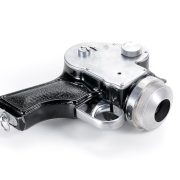Ring exercises have become one of the most effective and versatile forms of bodyweight training. Once used exclusively by gymnasts, gymnastic rings are now popular among fitness enthusiasts for building functional strength, balance, and muscle control. What makes them so appealing is that they can be used anywhere — at home, in the park, or at the gym — and they challenge your body in ways traditional weights cannot. For beginners, ring training offers an incredible foundation for strength, stability, and mobility while reducing joint stress compared to heavy lifting.
Understanding the Benefits of Ring Training
Gymnastic ring workouts work multiple muscle groups simultaneously. Because the rings move freely, every exercise requires you to engage stabilizing muscles that often go unused in conventional workouts.
Some major benefits of ring training include:
- Full-body activation: Almost every movement recruits your core, shoulders, arms, and back.
- Improved balance and control: Rings challenge your coordination and movement awareness.
- Joint-friendly resistance: Since you move naturally through space, the exercises adapt to your body’s range of motion.
- Scalable difficulty: Beginners can start with supported movements and progress as strength improves.
With regular training, ring exercises develop lean muscle, enhance flexibility, and improve posture.
Essential Equipment and Setup
Before starting your first ring workout, you only need two pieces of equipment — a set of sturdy gymnastic rings and a secure place to hang them. Rings can be attached to pull-up bars, tree branches, or overhead beams as long as the setup is stable and can support your body weight.
Adjust the strap length so the rings hang at the right height for your exercises. For pull-type movements like rows, the rings should be around waist level. For push-type exercises like dips or push-ups, the rings can be set lower to allow more stability and control. Always check that the straps are even and locked before each session.
Warm-Up and Preparation
Like any workout, a proper warm-up is essential. Spend 5–10 minutes preparing your muscles and joints before performing ring exercises. Focus on shoulder mobility, wrist flexibility, and core activation.
Dynamic movements like arm circles, plank shoulder taps, and bodyweight squats help improve circulation and prevent injury. Warming up ensures your body can handle the instability of the rings and perform movements with proper form.
Foundational Ring Exercises for Beginners
If you are new to ring training, start with these basic movements that teach control, form, and stability.
Ring Rows
This is one of the best pulling exercises to develop back and arm strength.
Stand at an angle beneath the rings, grip them tightly, and lean back. Pull your chest toward the rings while keeping your body straight. The steeper the angle, the harder it gets.
Ring Push-Ups
Ring push-ups add an element of instability to a familiar exercise. Lower the rings close to the ground, grip them, and perform a controlled push-up. Keep your core tight and elbows tucked. This move builds chest, triceps, and shoulder strength.
Ring Plank Hold
Hold yourself in a plank position with your hands gripping the rings slightly above the floor. This intense variation engages the entire core while improving shoulder stability.
Ring Support Hold
Hold yourself above the rings with arms straight and rings close to your body. Keep your core engaged and shoulders stable. This move strengthens your stabilizers and improves body awareness for more advanced exercises.
Building Core Strength with Rings
One of the greatest advantages of ring training is how it challenges your core. Even simple exercises require your abs and obliques to stabilize your body.
Try these beginner-friendly core exercises:
- Tucked L-sit: Sit between the rings with legs bent and lifted, holding yourself steady.
- Ring Knee Tucks: From a push-up position, pull your knees toward your chest while keeping your back flat.
- Ring Body Saw: Place your feet in the rings, assume a plank, and move your body forward and backward using your core.
These moves strengthen your midsection and help you develop balance and control across all ring exercises.
Developing Upper Body Strength
Rings are exceptional for building upper body power without heavy weights. Start with the following beginner exercises:
- Ring Dips (Assisted): Lower yourself slowly between the rings and push back up while keeping your elbows close. Beginners can use their feet for support until they gain full strength.
- Ring Bicep Curls: Stand in a leaning position with palms facing you and curl your body toward the rings, focusing on squeezing your biceps.
- Ring Face Pulls: Pull the rings toward your face, keeping your elbows high. This movement strengthens your upper back and rear shoulders.
Consistent training with these exercises enhances strength and prepares you for advanced moves like muscle-ups or ring handstands.
Lower Body Ring Exercises
While most people associate rings with upper body workouts, they can also be used effectively for lower body training.
Here are a few examples:
- Assisted Pistol Squats: Hold onto the rings for balance and lower yourself into a single-leg squat. This improves leg strength and stability.
- Ring Hamstring Curls: Lie on your back with heels in the rings and lift your hips as you curl your feet toward you. This builds hamstrings and glutes.
- Bulgarian Split Squats: Use the rings to stabilize yourself as you perform split squats for improved balance and control.
These exercises create a well-rounded workout that targets the entire body.
Structuring a Beginner Ring Workout Routine
For best results, structure your workout with a balance of push, pull, and core movements.
Here’s a sample weekly routine:
- Day 1 – Push Focus: Ring push-ups, dips, plank holds
- Day 2 – Pull Focus: Ring rows, face pulls, bicep curls
- Day 3 – Core and Legs: Tucked L-sits, hamstring curls, assisted pistol squats
Perform 3 sets of each exercise for 8–12 reps. Rest 60–90 seconds between sets. As you progress, increase the angle or difficulty rather than rushing into advanced movements. Focus on form, control, and breathing.
Tips for Progress and Safety
Progress in ring training requires consistency and patience. Start with basic exercises and increase difficulty gradually.
- Focus on form: Maintain proper posture and control during each repetition.
- Train regularly: Practice 3 to 4 times per week for steady progress.
- Rest and recover: Allow your muscles time to adapt and grow stronger.
- Listen to your body: Avoid overtraining or pushing through pain.
- Track your progress: Note improvements in stability, endurance, and movement control.
Ring training rewards discipline and awareness. Over time, you will notice significant improvements in strength, flexibility, and confidence.
Conclusion
Gymnastic rings are one of the most effective tools for building a strong, functional, and balanced body. For beginners, they provide a challenging yet safe introduction to bodyweight training. By mastering basic movements like ring rows, push-ups, and holds, you can develop strength and stability that translates into better performance in other workouts and daily life. With minimal equipment and a focus on consistency, ring exercises offer a full-body workout that grows with you. Whether your goal is muscle tone, mobility, or athletic control, ring training delivers lasting results and a sense of mastery over your own body.
FAQs
1. Are ring exercises suitable for beginners?
Yes, ring exercises are excellent for beginners. They allow you to adjust the difficulty by changing your body angle or using assistance. Rings encourage proper form and strengthen stabilizing muscles from the start.
2. How often should I train with rings?
Beginners can train with rings three to four times a week. Focus on different muscle groups each session and allow at least one rest day between workouts to recover and prevent overtraining.
3. Can I use gymnastic rings at home?
Absolutely. Rings are lightweight, portable, and easy to install. You can hang them from a pull-up bar, ceiling beam, or sturdy outdoor structure. Always make sure the setup can support your body weight safely.
4. Do ring exercises build muscle?
Yes. Ring training promotes muscle growth by engaging multiple muscle groups and stabilizers at once. The instability of the rings increases muscle activation, leading to strength and lean muscle development over time.
5. How long does it take to see results from ring training?
Most beginners notice improvements in strength and control within four to six weeks of consistent training. Visible muscle tone and increased endurance follow with regular practice and a balanced diet.
Also read: Shop PFAS Free Apple Watch Bands – Eco-Friendly & Non-Toxic Materials









